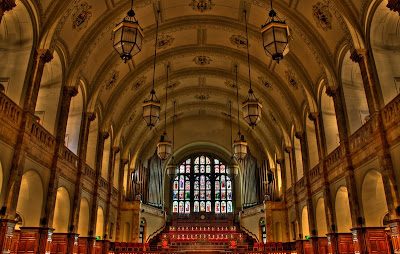
"The Palace Theatre first opened its doors in August, 1913, a comparative latecomer in the wave of new theatre building in which public demand for entertainment had been finding expression since the beginning of the century.
Described as a miniature opera house of classic design and seating, at that time, 660 it boasted every modern facility of the day. Mr H K Hayles was the managing director of the company, the Redditch Palace Ltd and it appears that the cost of building the theatre (which was cited as £9,000) may have been raised by private subscription.
The Palace Theatre used to be a Cine-Variety house which meant that it combined films and variety entertainment on the bill. Until 1929, The Palace ran a mixed bill of fare, but in February of that year, it was being advertised as Palace Super Cinema in April 1930 a Western Electric Sound System was installed and ticket prices were raised to 6d (Pit) and 1/-(circle), due to the cost of installing the new Talkie apparatus.
In 1939, at the beginning of the war the Palace closed in common with places of entertainment elsewhere, but by 1940, was fully in operation with the usual entertainments.
In the late 1940's, films took a back seat at the Palace. Jack Leuty took over the management of the building and ran a series of theatrical entertainments; this lasted until 1952, when new management took over under Mr S G Williams.
By 1954 the lack of artists, good touring shows , rising costs, coupled with the start of transmission of BBC television from Sutton Coldfield and the ease of purchase of sets, all conspired against the independent theatre operator, so much so that on the 19th March 1954 the Indicator ran a report 'Can the Palace be kept open?'
In May 1954 came the shock announcement "Palace to Close Down" ran the headline. Councillor J R Wilkinson, the owner stating to the Indicator - "The town has lost interest, I cannot afford to stay open"
The Palace was to re-open on 21st February 1955, as a Roller Skating Rink , the raked floor had gone the stage etc, all altered to suit this new form of public enter
 tainment. By 1959, the Palace Theatre became a Dance Hall, from then it led a life in mixed use, including in the late 1960's being used as a Bingo Hall.
tainment. By 1959, the Palace Theatre became a Dance Hall, from then it led a life in mixed use, including in the late 1960's being used as a Bingo Hall.In 1967 the Development Corporation bought the Palace and handed it over to Redditch Urban District Council, it opened on September 11th 1971 with a show called Between the Bars featuring that master musician Donald Swann.
By 1970 the fate of the Palace was more or less settled. Multi-Entertainment Centres were now being thought of in other areas and with Redditch being a developing town it was decided to refit the Palace for theatrical use.
It was opened by Mr Peter Walker MP, the Secretary of State for the Environment, on the 11th September 1970, Still retaining the Palace name it became a multi purpose venue. Seats in the stalls were now stackable, allowing for many uses of the floor area. Other additions included moving the dressing rooms from the front of the building to the side taking over what had been part of Shrimptons Needle Factory and adding the present foyer extensions. Administration offices were created where the dressing rooms had previously been. In 1975 a Buy a Seat Campaign was launched and the stalls were fitted out with new seats.
In 1982 a private theatre group took it over under the title of the Mercian Theatre and Arts Federation but a report in the Indicator and Chronicle in April summed it up after only 60 people turned up to see a concert. Just five of them were from Redditch.
"The fate of the Redditch Palace is in the hands of the audience."

The Redditch Borough Council took over the management and running of the building in 1985 and since then has continued a tradition of providing a wide mix of entertainment to please every palate." [Text taken from Palace Theatre website]
I also took some shots of the Town Hall, it's not quite as historic as the palace theatre, but it looks fairly interesting anyway. I remember when I was a kid I used to think it was some kind of giant transformer and stared at it waiting for it to transform....





